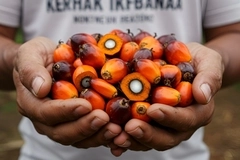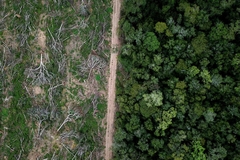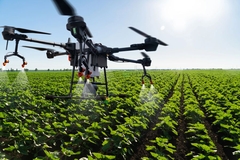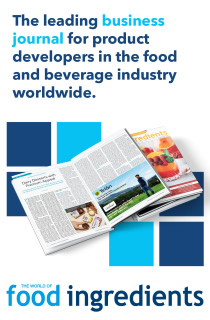Coffee and fermentation: Scientists harness unripe cherries to reduce waste

Researchers at the Federal University of Uberlândia (UFU) in Brazil have unveiled an innovative fermentation method that transforms unripe Arara coffee cherries into high-quality specialty coffee. This process could significantly impact coffee production by unlocking the potential of the immature fruits, traditionally discarded for their astringent taste.
The team used self-induced anaerobic fermentation to seal beans in bioreactors without oxygen for up to 96 hours, and created coffee beverages that scored above 80 points in blind tests, meeting the Specialty Coffee Association’s standards.
“The fermentation of coffee cherries provides an opportunity to enhance the beverage’s sensory profile. Due to uneven ripening, finding unripe cherries mixed with optimally ripe ones is common during harvest,” professor Líbia Diniz Santos from UFU, tells Food Ingredients First.
“Therefore, our group began studying the use of fermentation technologies that incorporate unripe cherries alongside ripe ones. In this study, we used 70% unripe cherries in the fermentation stage.”
Santos is the advisor of the master’s research conducted by student Luiza Manuela Alves Braga Cardoso at the university and coordinates the research group From Seed to Cup. This group studies post-harvest coffee processes in the Cerrado Mineiro region in Brazil, where 255,000 hectares of coffee farms produce six million 60kg bags per year.
The project focuses mainly on the fermentation and drying of coffee cherries to produce specialty coffees.
Fermentation for flavor
The study, published in Food and Bioprocess Technology, reveals that even with a percentage of unripe beans, the resulting coffee was comparable to, or superior to beverages made from only ripe beans.
 Santos with project coordinators Dr. Pedro Luiz Lima Bertarini, Dr. Matheus Sousa Gomes and Dr. Laurence Rodrigues do Amaral and their Porandu brand coffee products.“In fermentation, microorganisms use the pulp and mucilage of coffee cherries to produce certain important metabolites that contribute to the coffee’s sensory profile. This process, in turn, altered the composition of unripe cherries’ beans, improving their flavor,” explains Santos.
Santos with project coordinators Dr. Pedro Luiz Lima Bertarini, Dr. Matheus Sousa Gomes and Dr. Laurence Rodrigues do Amaral and their Porandu brand coffee products.“In fermentation, microorganisms use the pulp and mucilage of coffee cherries to produce certain important metabolites that contribute to the coffee’s sensory profile. This process, in turn, altered the composition of unripe cherries’ beans, improving their flavor,” explains Santos.
Fermented beans contain organic acids, esters, ketones, and alcohols in different concentrations compared to non-fermented cherries, contributing to the fermented beans’ superior sensory attributes.
The researchers also found that controlling the temperature and fermentation time was critical to achieving higher sensory scores.
Road to commercialization
The scientists expect the product to be valued in domestic and foreign markets, and have received positive feedback from the industry.
“The study has attracted interest not only from researchers and policymakers, but also from coffee producers seeking science-based alternatives to enhance their sensory profiles,” says Santos. Many have also reached out to explore potential applications of the findings within their farms.
The authors are all members of the From Seed to Cup group, and have established a brand of specialty coffee, Porandu, spun from the surplus generated during research, donated by its partner producers, Santos shares.
“Porandu means ‘to research’ or ‘to question’ in the Indigenous Tupi-Guarani language of Brazil,” she explains. It is a specialty coffee that embodies the research and technologies developed by the group, aiming to increase the accessibility of research insights among coffee enthusiasts, cooperatives, and decision-makers.
 The authors expect their fermentation method to allow coffee producers to improve beverage quality and reduce waste.
The authors expect their fermentation method to allow coffee producers to improve beverage quality and reduce waste.
What’s next?
Santos expects the fermentation method to allow coffee producers to use fermentation techniques to improve beverage quality in the future. “Even when cherries are harvested with some immaturity, this technology makes it possible to produce specialty coffees without sensory defects.”
For the analysis, the researchers used an AI tool developed by the research group, the Internet of Things, Next-Generation Sequencing, and advanced post-harvest processing for coffee, she adds.
“Our next step is to deepen the research by expanding our database and incorporating more longitudinal monitoring to track trends better and measure changes with greater accuracy. We also plan to implement pilot projects in various regions, in partnership with NGOs, local governments, and private sector stakeholders.”
The projects will be used to validate the methodology in diverse contexts and to refine the technologies applied within the coffee sector. “Ultimately, our goal is to bridge the gap between academic knowledge and actionable strategies that deliver measurable, positive change,” Santos concludes.

















